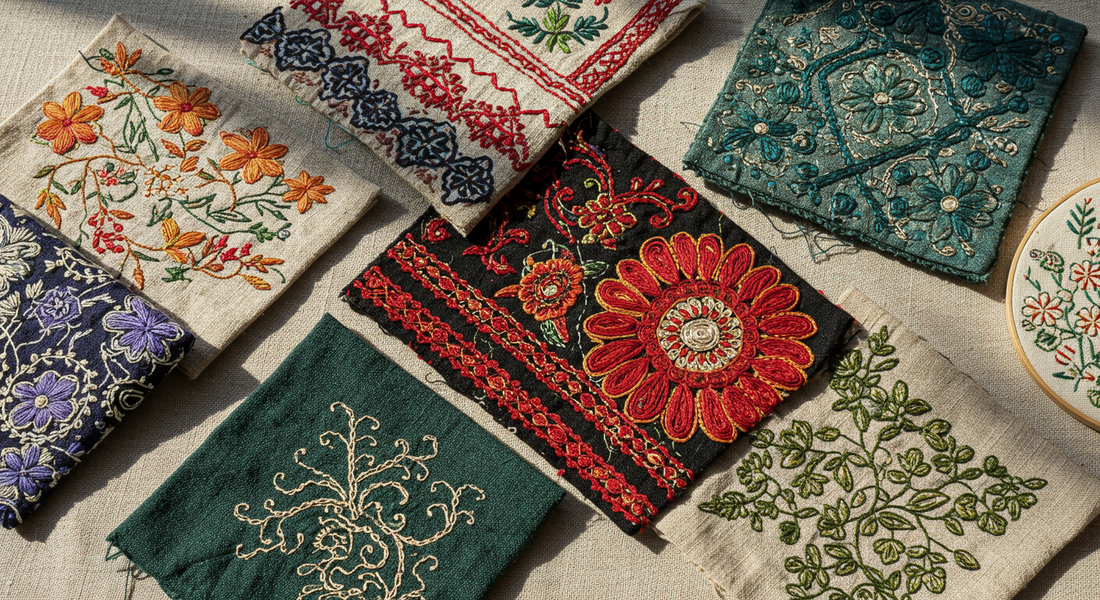
Embroidery Styles Worldwide
Share
A Journey Through Cultural Traditions in Needlework
Embroidery is more than just decoration—it’s storytelling, identity, and tradition woven into fabric. Across the globe, different cultures have developed distinctive embroidery styles, each shaped by history, geography, and social meaning. This article explores some of the world’s most cherished embroidery techniques and the unique qualities that define them.

Sashiko (Japan)
Overview
Originally a functional technique, Sashiko was developed by Japanese farmers and artisans to reinforce worn clothing. It has since evolved into a beautiful decorative art form.
Characteristics:
- • White thread on indigo fabric
- • Repeating geometric patterns
- • Running stitch technique
Symbolism:
Sashiko often features symbolic motifs like waves (strength), bamboo (resilience), and cranes (longevity).

Hardanger (Norway)
Overview
Hardanger embroidery originates from the Hardanger region and is known for its geometric elegance and white-on-white patterns.
Characteristics:
- • Even-weave linen
- • Cutwork and drawn thread techniques
- • Satin stitches and eyelets
Common Use:
Traditionally used in home décor, table linens, and Norwegian folk costumes.

Crewel Work (United Kingdom)
Overview
Crewel embroidery is a decorative style using wool thread to stitch floral and Jacobean patterns, especially on heavy linen.
Characteristics:
- • Uses long and short stitch, satin stitch, and laid work
- • Rich in curves and botanical motifs
Cultural Note:
Popularized during the 17th century in English households and often found in tapestries and bed hangings.

Kantha (India)
Overview
Kantha is a traditional embroidery from eastern India and Bangladesh that reuses old saris and cloth by layering and stitching them together.
Characteristics:
- • Simple running stitch
- • Storytelling through images of animals, people, and daily life
- • Quilted texture
Modern Use:
Still used today for quilts, scarves, jackets, and home textiles.

Tatreez (Palestine)
Overview
Tatreez is an ancient Palestinian embroidery style passed down through generations by women to record heritage and community identity.
Characteristics:
- • Counted cross-stitch on even-weave fabric
- • Bold colors and geometric patterns
- • Often stitched onto dresses (thobes)
Meaning:
Patterns often represent regional identity, marital status, or life events.

Other Notable Styles
- • Zardozi (India/Persia): Gold and silver thread embroidery for royal garments
- • Hmong (Southeast Asia): Bright, geometric story-cloth embroidery
- • Brazilian embroidery: High-sheen rayon thread in dimensional floral designs
- • Suzani (Central Asia): Colorful silk embroidery on cotton; often used for wall hangings and bedspreads
Final Thoughts
Exploring embroidery styles around the world not only improves your technical knowledge—it connects you with the spirit and resilience of different communities. Whether you try your hand at Sashiko or simply admire a piece of Palestinian Tatreez, global embroidery traditions can inspire your creative journey.